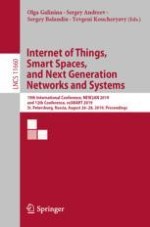2019 | OriginalPaper | Buchkapitel
Malware Squid: A Novel IoT Malware Traffic Analysis Framework Using Convolutional Neural Network and Binary Visualisation
verfasst von : Robert Shire, Stavros Shiaeles, Keltoum Bendiab, Bogdan Ghita, Nicholas Kolokotronis
Erschienen in: Internet of Things, Smart Spaces, and Next Generation Networks and Systems
Aktivieren Sie unsere intelligente Suche, um passende Fachinhalte oder Patente zu finden.
Wählen Sie Textabschnitte aus um mit Künstlicher Intelligenz passenden Patente zu finden. powered by
Markieren Sie Textabschnitte, um KI-gestützt weitere passende Inhalte zu finden. powered by
